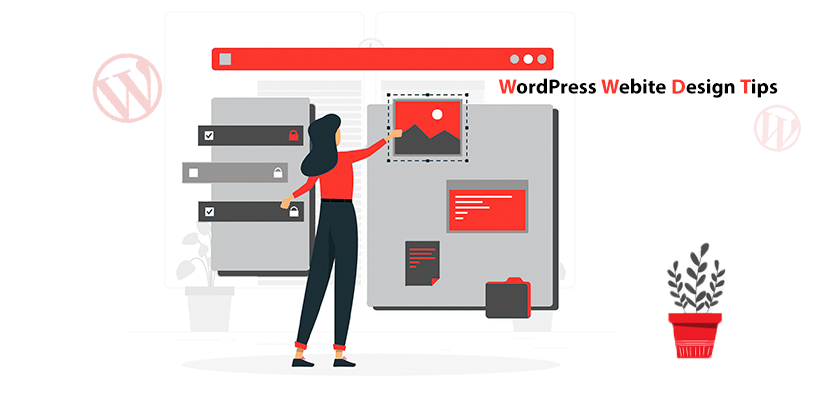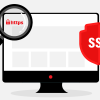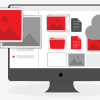15 Essential WordPress Website Design Tips

So, you are deciding on launching a brand new WordPress website. Do you know anything about top WordPress website design tips? Designing a WordPress website may be easy to do as everything can be done via plugins and without knowing any programming language. You may ask why some WordPress website design agencies cost tons of money for their WordPress website design services?
WordPress tips and tricks for designers that we regular people know nothing about programming or web design know about. Therefore, some web design agencies that are masters in WordPress know how to design a beautiful WordPress website that is ready for both visitors and Google crawlers.
In this article, we would like to discuss top WordPress website design tips that you need to know before getting into designing a WordPress website on your own.
WordPress Tips and Tricks for Designers
So within the first few minutes of visiting your website, your visitors can guess what your website is all about, and your website actually determines whether your business is trustworthy enough for the services they require. If your website is rather hard to understand, as in the layouts is difficult to read, the price table is off the page, etc. it may be a good idea to understand WordPress website design tips and start optimizing your WordPress website in order to keep your visitors interested and make them return.
What are these tips that you need to know before starting a WordPress website? or if you already have a WordPress website, understanding these points can help you optimize it.
1. Optimize WordPress for Speed
Optimizing WordPress for speed is the most important tip and almost every single WordPress designer out there strongly believes it is important. According to analytical tools such as Google Analytics and research conducted by SEO specialists, a website’s speed affects everything from user satisfaction, amazing bounce rate, and most importantly, conversion.
If your WordPress website isn’t performing well enough and the speed is rather slow, visitors won’t stay on your website; in most cases, if your website is taking too long to load, visitors tend to leave open another website for their services or answers. As a result, because visitors are closing your website, search engines such as Google understand that your website is lacking in speed. Therefore, it will directly affect your website’s ranking.
2. One Item at a Time
Your WordPress design mustn’t bombard visitors with information and all the services and products you offer as soon as they visit your website. Instead, they prefer whitespace or, in other words, low visual complexity.
Hence, most WordPress themes have single-column layouts and tend to use tall pages to neat and in order. You may have come across a website where it has sidebars, right rail, etc., and it is tough to find the content you want to see, and as a result, you tend to leave the website, and you wouldn’t want to visit it ever again. Thus, don’t bombard visitors with everything; cut the clutter and make them focus on one content/layout at a time.
3. False Bottoms
As you probably know, most page builders in the WordPress repository both free and premium use page blocks. This function eliminates the need to know any programming language. However, these blocks often come with dark backgrounds, which in the day-to-day world means you have reached the bottom of the website.
Thus, visitors may think they are at the end of your website, and they will stop scrolling down to see the rest of your website; this is called the false bottom. Thus, be careful when choosing colors for your page blocks; if you want to go for dark colors, make sure it is not as dark as your footer. However, we always recommend going for white.
4. Carousels and Sliders
Both carousels and sliders have been popular for years, and they have been used on both small and big websites. But there is a problem for them. If you have them on the first page, which would be your homepage, visitors may only see the first slide; depending on the speed of your carousel.
So, what can you do instead? You can use featured images with call to action button. Or, if you would like to have sliders on your website, try to stack the slides so that the visitors can see all of them by scrolling down.
5. Social Proof
Have you bought anything online recently? You directly purchased a product or looked at its reviews by other people? By looking at reviews of a product before purchasing it, you somewhat trust and understand the product you are going to buy.
The same method should be added to your website. If, of course, you are selling certain services or products that may require people’s testimonials. Having testimonials from real people can push your visitors to make a purchase. According to studies conducted on this matter, 58% of online visitors are more likely to buy what you offer based on reading real people testimonials.
6. Proper Stock Images
It is always recommended to use real images on your website. Whether it is of a product, services, or testimonials of real people, try avoiding stock images. Sure, stock images can save you a ton of time and resources compared to going for real images. But, you’ll find big websites such as Amazon, GoDaddy, etc., prefer to use real images for their products and services that they offer. Having stock images may get you the “cliché” title, and people may not take what you do and offer as seriously as you have hoped.
7. Guide Visitors with Colors
People tend to connect emotionally to colors such as blue and red. For example, red stands for urgent, blue stands for calm. Colors can be part of your brand’s identity, but at the same time, they can be used to catch visitors’ eye toward a powerful call to action such as add to cart.
8. Keep it Simple
Sometimes less is better. In your general WordPress design, you should always take this into consideration. As mentioned above, visitors don’t like too much complexity when it comes down to the visual aspect of your website. Try to rethink how you would like to use your sidebars. However, in 2021, more and more websites update their design by ditching sidebars and going for single-column design.
Moreover, stick to standard designs. You don’t necessarily have to develop a new design that no one has ever seen; you can take the standard design that visitors are familiar with and personalize it to match your brand and the services you offer.
Read More: WordPress 5.7 Updates and Fixes
9. Go with Scrolling
You might ask, what would happen to all the information that you have on the sidebars if you removed them? How are you going to represent them on your website? Well, you can rethink your design and add everything to your homepage or create different landing pages for each of them.
As mentioned above, having tall pages can be beneficial to your website. People prefer to scroll down rather than clicking on various links and going to different pages of your website. It is sometimes essential to trap visitors in your website by presenting them with different URLs that belong to your website. However, for the homepage, try to avoid that and stick to scrolling.
10. Right Order
Whether they are ordered or not, using lists can be ready suitable for showcasing different pages of your website. However, human attention is fickle. People tend to remember the first and last item (URLs) in a list and forget about the middle section. You can take this to your advantage by adding two of your most essential items at the beginning and the end of your list, where visitors are much more likely to remember them.
11. Linking from Services to Blog
So, why do people visit your website? What is the main goal? To convert them into potential customers. So, you should always avoid linking visitors from service pages to your blog posts. In general, in content marketing, people tend to write articles to convert visitors into potential customers. In this case, the customer is ready to purchase. Thus, you should always avoid linking them from service pages to blog posts as blog posts have more distractions, and visitors tend to exit right after reading a blog post.
12. Outbound Links
Before linking other websites on your articles or homepage URLs, think about whether that outbound link can help you convert leads or lead them away from your website and, in some cases, make purchases from your competitors.
13. Social Media Icons in Header
Having social media icons in your header is rather pointless. Because you are trying to make visitors stay as much as possible on your website and potentially convert them into customers. If you have social media icons of your social networking pages on the header, they may click on it as soon as they enter your website and get distracted by social media platforms and what they stand for. Therefore, it is recommended to add them to your footer where visitors are done scrolling your homepage, and they are likely to click on a link.
14. Subheads
Subheads are everywhere on your website, and often they are long and useless, followed by useful information. It is recommended to have small yet useful subheads with extended information rather than long subheads.
15. Long Paragraphs
Try to avoid long paragraphs on your website. Long paragraphs on the homepage serve no purpose. If the information is crucial and visitors must read them, try to break them into simpler sentences that are easier to consume by visitors who tend to scan websites in the first 30 seconds of visiting a website they have never been on.
Conclusion
This article discussed WordPress website design tips that you should know when optimizing your website or launching a brand new website. Did you know any of the WordPress design tips that we mentioned above? Which one of them sounded interesting to you, and which one of them you will be considering using on your WordPress website?

